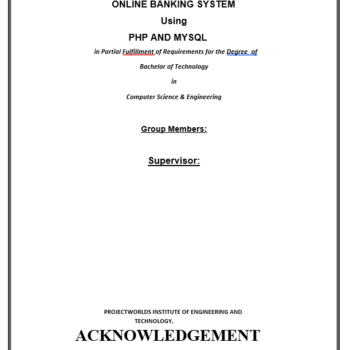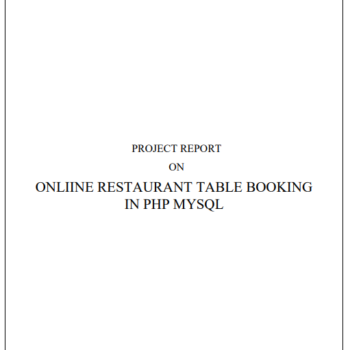Tomato Leaf Disease Prediction Project Report

Tomato Leaf Disease Prediction Project Report
₹1,001.00Write a review
You must be logged in to post a review.
Tomato Leaf Disease Prediction
Introduction:
The tomato (Solanum lycopersicum) is one of the most widely grown and economically important crops worldwide. However, tomato plants are susceptible to various diseases, including fungal, bacterial, and viral infections, which can significantly impact crop yield and quality. Early detection and prediction of these diseases are crucial for implementing timely and effective control measures. This synopsis provides an overview of the research and development of a tomato leaf disease prediction system.
Objective:
The primary objective of this study is to develop a predictive model that can accurately identify and classify tomato leaf diseases based on visual symptoms and patterns. By utilizing machine learning algorithms and image analysis techniques, the aim is to create a reliable and efficient system for early detection and management of tomato leaf diseases.
Methodology:
1. Dataset Collection: A comprehensive dataset of high-resolution images of healthy tomato leaves and leaves affected by various diseases is collected. The dataset is properly labeled and annotated for training and validation purposes.
2. Feature Extraction: Image processing techniques are applied to extract relevant features from the collected images. These features may include color, texture, shape, and spatial information, which can help differentiate between healthy and diseased leaves.
3. Model Development: Various machine learning algorithms, such as convolutional neural networks (CNNs), support vector machines (SVMs), and decision trees, are trained using the extracted features. The models are optimized and fine-tuned to achieve higher accuracy and robustness.
4. Disease Classification: Once the models are trained, the system can classify new tomato leaf images into different disease categories based on learned patterns and features. The classification results can help farmers and agricultural experts identify specific diseases accurately.
5. Performance Evaluation: The predictive model is rigorously evaluated using standard metrics such as accuracy, precision, recall, and F1-score. Cross-validation techniques and separate test sets are utilized to ensure the reliability and generalizability of the model’s performance.
Expected Outcomes:
The tomato leaf disease prediction system aims to provide the following outcomes:
– Accurate and early detection of tomato leaf diseases.
– Classification of diseases based on visual symptoms.
– Timely recommendations for appropriate disease management strategies.
– Minimization of crop losses and improved agricultural practices.
Conclusion:
The development of a robust tomato leaf disease prediction system can significantly contribute to sustainable agriculture practices and crop management. By leveraging machine learning and image analysis techniques, this system can assist farmers in identifying and managing tomato leaf diseases promptly, thereby reducing economic losses and ensuring healthy tomato production.













There are no reviews yet.